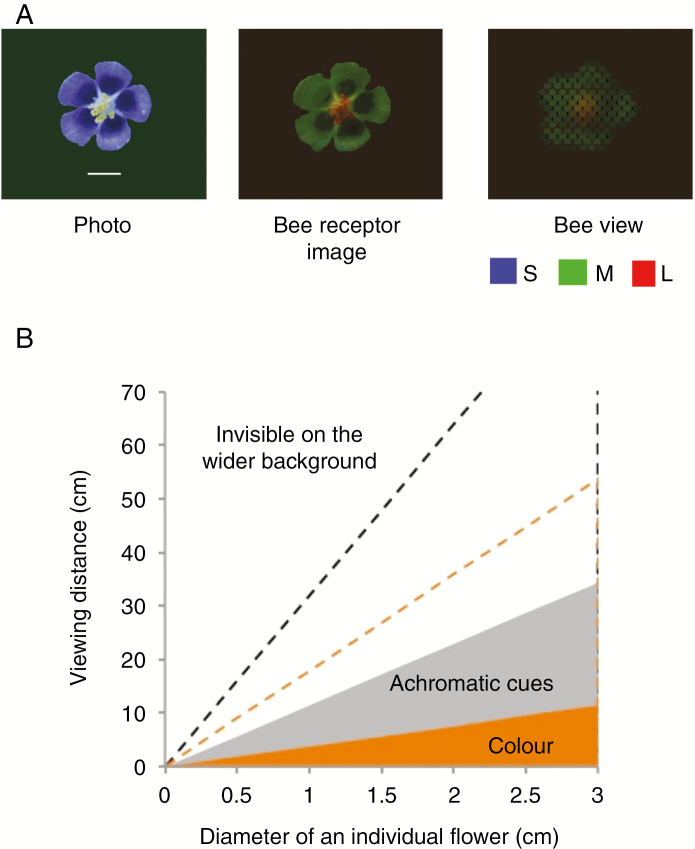Fig. 1.
(A) A view of Aquilegia vulgaris, a relatively large flower with protruding anthers and coloured pollen (from Hempel de Ibarra et al., 2014). The left image shows a photo, the middle a UV-VIS multispectral image in RGB colour values obtained by modelling the spectral measurements and photoreceptor sensitivity for the S, M and L receptors of the honeybee. The right image shows the flower as seen through the honeybee (Apis mellifera) ommatidia from a distance of 10 cm, at which a honeybee can perceive the colours of this individual flower. (B) The limits of spatial resolution of honeybee vision as determined in behavioural experiments (see also Hempel de Ibarra et al., 2014). Shown are the distance ranges over which single-coloured individual displays of differently-sized flowers can be detected by an approaching bee through achromatic and colour cues. The dashed lines show the corresponding limits for average-sized bumblebee workers, Bombus terrestris. Foraging bumblebee workers tend to be larger in body size and have therefore larger-sized and more sensitive eyes, an advantage for flying and nesting in a wide range of diverse habitats and grounds with dense vegetation.

